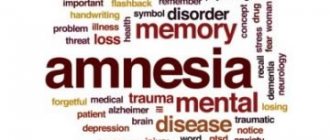Postpartum depression is a mood disorder characterized by apathy, low mood and impaired communication with the baby.
According to statistics, 10-15% of women experience postpartum depression. For some it occurs immediately after childbirth, for others it occurs several months or even six months after childbirth.
According to the severity of postpartum depression, there are:
- light;
- moderate;
- heavy.
Women often don't notice or care about mild depression, but it can worsen over time and become moderate or severe. Mild postpartum depression is characterized by low mood, fatigue, decreased appetite, guilt, bad feelings, and lack of self-confidence.
With moderate depression, a woman has to force herself to do ordinary things, she is not interested in her husband or child, and her mood may be depressed. Moderate postpartum depression often occurs due to past reproductive trauma (death of a child, miscarriage, long-term infertility) in the woman herself or in her close relatives, as well as due to unpreparedness for certain aspects of motherhood.
With severe postpartum depression, a woman may be unable to do housework and care for the child, she may have severe irritation with the child and others, and suicidal thoughts. In this case, it may be recommended to stop breastfeeding, take antidepressants, and be admitted to a neurosis clinic or hospital.
Any woman has a chance of developing postpartum depression, even if the pregnancy is planned and desired, and the relationships with others are excellent.
The birth of a child is a joyful and happy event, but for some women it is a difficult and joyless time. You want to be left alone, you don’t understand why you need a child, because you have neither the strength nor the desire to care for him.
Maybe you feel love for your baby, and this only makes you feel more guilty about not being able to care for him. Or maybe you realize with horror that you don’t feel anything for him, and you think: maybe you’re a bad mother?
All these are signs of postpartum depression, which may or may not be accompanied by a violation of attachment to the child. Depression can begin immediately after childbirth, or it can occur several months or even six months after the birth of the child.
It's good if your mother or another grandmother can take care of the child for a while, although this fills you with a feeling of guilt and inadequacy. If caring for the baby is entirely your responsibility, you have no one to share your feelings with, and you are home alone with your child all day, then things are bad.
The difficulty with postpartum depression is that it is impossible to take antidepressants due to breastfeeding. Those women who took them before pregnancy have it even worse, because they feel anxiety and depression even before giving birth.
Symptoms of postpartum depression
The most common symptoms of postpartum depression are:
- fatigue;
- poor sleep;
- irritability;
- decreased mood background;
- tearfulness;
- low energy level (asthenia);
- slow motor skills;
- indecision;
- concern for yourself or your child;
- feelings of guilt and worthlessness;
- helplessness in caring for a child;
- sleep and appetite disorders.
Since a depressed woman avoids eye contact with her baby, touches him less often, and is less attentive to his needs, an experienced pediatrician may also suspect mood disorders or depression in the mother based on the baby’s behavior.
Babies whose mothers are postpartum depressed exhibit the following symptoms:
- do not look into the eyes of an adult who is in contact with them;
- they shout a lot;
- are behind in weight and height;
- do not calm down in their mother’s arms;
- They have colic more often.
Older children's bad behavior, attention seeking, or signs of anxiety and depression can also be signs that the postpartum period is not going well.
What should relatives of a woman suffering from postpartum depression do?
For a long time, many nationalities had a tradition when close relatives came to the house of a woman who gave birth for a month. Mom, sister or aunt took on all the housework, giving the mother in labor the opportunity to recover after childbirth. Today this is rare, but still, a young mother needs to be helped.
Long before the birth, you can agree on how to divide household responsibilities between family members. You should not be too critical of a woman who has recently given birth, and even less should you reproach her for something, calling her weak-willed, helpless or lazy. Remember that during this period she needs consolation and affection.
Her husband should be especially attentive to the wife who has given birth. First of all, this concerns the intimate side of life. Quite often, during the postpartum period, women experience an aversion to sex, but you should not put pressure on her and force her into a close relationship. Doctors do not recommend having sex for 1-1.5 months for physiological reasons. But at the same time, sex can help get out of depression. Only it should be of mutual desire.
Causes of postpartum depression
The causes of postpartum depression include a tendency to depression in general, that is, the presence of episodes of depression before pregnancy; unwanted pregnancy, which ruins life plans, deprives a woman of her usual social circle and turns a woman into a housewife against her will; early psychological traumas that become actualized when a small child appears, etc.
Risk factors for postpartum depression:
- depression during pregnancy;
- previous episodes of depression;
- psychiatric diagnosis, such as bipolar disorder or schizophrenia;
- personality disorders, for example, dependent, obsessive-compulsive, narcissistic, borderline;
- chemical dependence;
- adolescence (according to some studies, up to 50% of teenage mothers suffer from postpartum depression);
- loneliness or difficult relationships with a partner;
- unwanted pregnancy;
- trauma or abuse in the past.
Violation of attachment to the baby, perceived as a lack of love for him, can be caused by an unwanted pregnancy, difficult childbirth, postpartum depression itself and one’s own psychological trauma.
Both postpartum depression and impaired attachment to the child, which often go together, are corrected with special techniques or simply by talking with a psychologist about your childhood, relationships with people and feelings for the baby, husband and mother. They may go away on their own, 3-4 months after the start.
Help from a psychologist for depression after childbirth and during pregnancy
Page 2 of 7
At least one in 10 mothers suffers from postpartum depression. It is one of the most common postpartum complications and occurs in 10-13% of women giving birth. As a rule, in such cases it is not always possible to make a correct diagnosis, because mothers are reluctant to turn to doctors for help. Psychotic conditions in the postpartum period occur in no more than 0.1-0.3% of cases. That is, out of every thousand women who give birth, from 1 to 3 suffer from an even more severe form of depression - postpartum psychosis, in which a woman experiences delusions or hallucinations, often accompanied by an obsession with harming herself or her child. The psychotic condition significantly impairs a woman's ability to function naturally within family and social circles, and also poses a significant risk of suicide attempt. In most cases, a postpartum psychotic state requires emergency hospitalization of the patient. Early postpartum depression develops in the first days or weeks after childbirth, and usually lasts from a week to a month. Late postpartum depression usually develops several months after pregnancy. Its duration may vary, but more often it lasts more than a month.
Depression most often manifests itself 30-35 days after birth and in some cases can last up to 1.5-2 years. However, in most cases, a depressive episode ends spontaneously 3-6 months after birth. Symptoms of postpartum depression meet diagnostic criteria for depressive disorder. The patient experiences a deterioration in mood, a decrease in energy, activity, the ability to rejoice and take pleasure, a decrease in interests and difficulty in concentrating for a long time. Pronounced fatigue is common, even after minimal effort. As a rule, sleep is disturbed and appetite worsens. Self-esteem and self-confidence are almost always reduced, even in mild forms of the disease. Thoughts about one's own guilt and worthlessness are often present. Low mood, which varies little from day to day, is not dependent on circumstances and may be accompanied by symptoms such as loss of interest in the environment and loss of pleasurable sensations. Characteristic features include waking up in the morning several hours earlier than usual, increased depression in the morning, severe psychomotor retardation, anxiety, loss of appetite, weight loss and decreased libido.
In most cases, postpartum depression remains unrecognized in the initial period. The most typical example is the prevailing idea of the “natural whims” or character flaws of a woman in labor who turns to her family for help instead of actively caring for her child. Loss of initiative and energy or fear of being judged and discussed by others often prevents a woman from seeking medical help. However, even when consulting a doctor, the disease often remains unrecognized, since some doctors tend to consider this condition a temporary and natural reaction to stress, which is childbirth, especially for first-time mothers. In this case, depression can increase over several months, and treatment of this condition is postponed until indications for emergency hospitalization arise.
<< First < Previous 2 Next > Last >>
Treatment of postpartum depression
Treatment for postpartum depression is rarely of interest to mothers because they often ignore the symptoms, feel ashamed of them, or wait for things to go away on their own.
However, help - medication, psychotherapy, or establishing contact with the child - is often helpful and reduces the likelihood of the negative impact of postpartum depression on the baby, older children and marital relationships.
Because of breastfeeding, medications are often inappropriate, but in cases of psychosis or long-term, persistent depression, the benefits of medications outweigh the harms of stopping breastfeeding.
Postpartum depression often doesn't require treatment because it goes away on its own within a few months, but there's no need to endure it if you can get help.
Postpartum depression is often accompanied by a breakdown in the bond between mother and child, which worsens the mother as she feels guilty for not loving her child enough, and the child as her development suffers from impoverished interactions with her mother.
Therefore, treatment for postpartum depression may include improving the bond between mother and baby. In this case, the psychotherapist works with a mother-child pair and, if necessary, teaches the mother to console the child, look into his eyes more, and exchange speech signals.
Since the child is naturally tuned to build contact with his mother, his responses, animation and vocalization in response to her speech, help restore the connection between mother and child, which gives confidence in his mother's love and competence.
PsyAndNeuro.ru
During pregnancy, changes in hormonal levels depend on the functioning of the temporary gland - the placenta. The concentration of progesterone and estrogen increases, reaching its peak in the last trimester before childbirth. Subsequently, their sharp decline is observed. The state of body functions affected by these hormones changes accordingly.
During pregnancy, mental disorders rarely develop, which may be due to the neuroprotective and stabilizing effect of female sex hormones, which are produced in large quantities. The emerging pathological conditions are predominantly an exacerbation of an existing disease and indicate an increased risk in the postpartum period.
Mental disorders associated with the postpartum period are classified under heading F53 “Mental and behavioral disorders associated with the postpartum period, not classified elsewhere.” This category includes only mental disorders associated with the postpartum period (occurring within 6 weeks of delivery) that do not meet the criteria applicable to disorders classified elsewhere in this class.
The most dangerous conditions in the postpartum period are depression and psychosis.
Postpartum depression can have any degree of severity and be accompanied by suicidal attempts. From the first day after birth, there is a decrease in mood or its fluctuations, irritability, tearfulness, asthenia, inability to concentrate, with a peak at about 3-5 days. It was noted that before pregnancy, such women were characterized by premenstrual tension syndrome, and during pregnancy depressive symptoms were observed. With mild symptoms (postpartum blues), healing can occur on its own within 7-10 days. More severe depression develops more slowly and requires the supervision of a psychiatrist. Professionals treating such women should be wary of suicidal intentions and attempts, as extended suicide (infanticide) occurs. The management strategy of psychiatrists is to adequately treat depression. The difficulty is that women can refuse long-term medication or stop treatment on their own due to breastfeeding.
Postpartum psychosis begins within 2-9 days and is likely during the first three months after birth, the incidence is 1-2 cases per 1000 postpartum women, and in primiparous women the risk of development is several times higher. Delusions and hallucinations, movement disorders are typical; they often reflect concern for the child, threats to his life and health, ideas about his special purpose, etc. Management tactics include relief of psychotic symptoms. Treatment is carried out in a hospital setting. The prognosis for postpartum psychosis is most often favorable if it begins before 1 month after childbirth, the presence of affective symptoms, and the absence of mental disorders before childbirth. As with depression, there is a risk of the patient stopping treatment on her own.
In terms of frequency of occurrence, various mental disorders of the neurotic level predominate - neuroses, anxiety states, asthenia, etc. They are caused by a decrease in the resistance of the central nervous system to stress, increased sensitivity to maladaptive factors and are exogenous in nature. Conditions such as fear, sleep disturbance, fatigue, premorbid characteristics, and psychological climate are important. A woman’s lifestyle changes dramatically, which cannot but affect her mental well-being.
In addition to the listed mental disorders, during pregnancy and the postpartum period, manifestations and exacerbations of endogenous diseases can be observed, caused by both a stressful situation and changes in hormonal levels.
Prepared by: Zhukova S.A.
Sources:
1. Belov V.G., Tumanova N.N. “Nervous-mental disorders in women in the postpartum period” / Scientific notes of the St. Petersburg State Institute of Psychology and Social Work / T. 9. No. 1. 2008 pp.50-55.
2. International statistical classification of diseases and related health problems. 10th revision (set of 4 books). - M., 2003. - T.1.
Postpartum depression and antidepressants
In cases of moderate or severe postpartum depression, doctors recommend taking antidepressants. If a woman is against taking medications, then you can replace them with psychotherapy. If she has nothing against it, then you should think about stopping breastfeeding.
It has been established that approximately 3-10% of the daily dose of antidepressants taken by the mother passes into breast milk. In infants under one year old, the liver cannot yet cope with medicinal substances, so a fairly large amount of medicine is retained in the child’s body.
Studies show that at 12-18 months, children whose mothers took antidepressants and continued to breastfeed experienced developmental delays. However, it is worth weighing the pros and cons, because sometimes it is better for the mother to get rid of depression faster than to continue breastfeeding.
Early childhood trauma and treatment of postpartum depression
Sometimes depression after childbirth is associated with early childhood trauma, abuse or loneliness that the mother herself experienced during infancy. When a child is born, these memories are revived and this makes communicating with the baby very difficult.
Typically, in such cases, anxiety and depression develop during pregnancy, so treatment can be started early. In such cases, psychotherapy involves reminiscing about childhood, reliving pent-up emotions, mending relationships with mother and father, and restoring the ability to connect with others.
Postpartum depression and attachment disorders
Sometimes postpartum depression is accompanied by a disruption in bonding with the baby, especially if the pregnancy was unwanted. The mother feels that she does not love the child, does not feel anything for him, that caring for the baby is a burden to her and does not make her happy at all. This disruption of communication with the baby does not always accompany postpartum depression, but is often either a consequence of it, or, conversely, a harbinger.
A mother experiencing postpartum depression often becomes apathetic, emotionally unavailable, unresponsive to the baby's needs, sad, irritable and tired. Feelings of guilt, inadequacy and worthlessness are common companions of depression.
Depressed women smile less often, avoid looking their baby in the eye, touch the baby less, talk to the baby less often, and use different intonations than mothers with babies typically use. The behavior of mothers appears awkward, caused by thoughts about their own inadequacy and unsuitability for the role of mother, typical for depression after childbirth.
Postpartum depression can result in psychosis, which can be expressed in lack of care for the child, the risk of killing the child and suicide of the mother.
Sometimes postpartum depression goes away spontaneously, on its own. Below you will read a fragment from a woman’s memoirs about her postpartum depression, given in the book Perinatal and postpartum mood disorders by Susan Dowd Stone, Alexis E. Menken.
I remember the complete helplessness of not being able to take care of him properly. My sister and mother passed it around while I sat in the back room pretending it didn't exist. I felt terrible guilt for the deep hatred I felt for Sam. I felt so ashamed of it, but I hated him, wished he had never been born, wished terrible things would happen to him. “What kind of person am I? How can I think about such a thing? - I asked myself.
I couldn’t stand the sight of my friends with their children and the happiness their parents felt. I cried every time I saw newborn babies on TV because of how I felt about Sam. I wanted to leave home once and for all and was afraid that Sam would find out how I felt about him when he grew up.
I can't believe that one day I saw the light at the end of the tunnel. One day, when Sam was 4 months old, I was dressing him, looked straight into his eyes (which I had previously avoided) and suddenly felt that I loved him, that he was mine. I don't know where these feelings came from, it was incredible. I had never felt anything like it, I adored him. He was my life, my whole life.
Thyrotoxicosis. Mental changes. Treatment options
About the article
131618
0
Regular issues of "RMZh" No. 13 dated June 15, 2006 p. 951
Category: General articles
Author: Antonova K.V. 1 1 FGBNU NTSN, Moscow, Russia
For quotation:
Antonova K.V. Thyrotoxicosis. Mental changes. Treatment options. RMJ. 2006;13:951.
Considering the widespread prevalence of cases of impaired thyroid function, in particular thyrotoxicosis, and the high frequency of occurrence in practice, interest in this pathology remains among doctors of various specialties.
Diseases accompanied by dysfunction of the thyroid gland reduce performance and worsen the quality of life of patients. There are about 200 million such patients in the world [1]. A condition characterized as hyperfunction is represented by thyrotoxicosis syndrome. Thyrotoxicosis (hyperthyroidism) is a syndrome the presence of which is associated with an increased content of thyroid hormones in the blood, which occurs in various diseases or exogenous excess supply of thyroid hormones. Thyrotoxicosis is observed in diffuse toxic goiter, multinodular toxic goiter, thyrotoxic adenoma, subacute thyroiditis (first 1–2 weeks), postpartum (silent) thyroiditis, autoimmune thyroiditis (its hyperthyroid phase is “hasitoxicosis”), thyroiditis that developed after exposure to ionizing radiation, thyrotropinoma, syndrome of unregulated TSH secretion, follicular thyroid cancer and its metastases, with ectopic goiter (ovarian struma), excessive iodine intake (iodine-Graves disease), trophoblastic tumors secreting chorionic gonadotropin, iatrogenic and “artificial or conditional” thyrotoxicosis. The most common cause of thyrotoxicosis is diffuse toxic goiter – it accounts for 80% of all cases of thyrotoxicosis [2]. At the same time, the incidence of diffuse toxic goiter ranges from 1 to 2 cases per 1000 people. 2.7% of women and 0.2% of men had or are suffering from diffuse toxic goiter. Most often, diffuse toxic goiter occurs in women aged 30 to 60 years, but people of both sexes (both infants and the elderly) are affected. This disease was first described in 1825 by Caleb Parry, in 1835 by Robert Graves, and in 1840 by Karl von Basedow. Historically, in English-speaking countries the common name for this pathology is “Graves’ disease”, in German-speaking countries it is called “Basedow’s disease”. In Russia, the term “diffuse toxic goiter” is traditionally used. Diffuse toxic goiter (DTG) is a disease that develops in individuals with a certain hereditary predisposition. The pathogenesis of increased synthesis of thyroid hormones and hyperplasia of the thyroid gland in DTG is caused by autoimmune mechanisms. In the development of diffuse toxic goiter, genetic predisposition plays a major role; The type of inheritance, according to modern concepts, is polygenic. The genes of the HLA system play a role in the inheritance of this disease, as well as other genes located outside the histocompatibility locus that are involved in the inheritance of autoimmune thyroid diseases. Infiltration of lymphocytes stimulates the proliferation of thyrocytes, which leads to an increase in the size of the gland and the development of the goiter itself. B lymphocytes take part in the formation of autoantibodies to various thyroid antigens, including the formation of thyroid-stimulating antibodies. The interaction of thyroid-stimulating antibodies with the thyroid-stimulating hormone (TSH) receptor leads to an increase in the synthesis and release of thyroid hormones into the blood, similar to the effects that occur when TSH and the TSH receptor are complexed. These antibodies bind to the TSH receptor, bring it into an active state, triggering intracellular systems (cAMP and phosphoinositol cascades) that stimulate iodine uptake, the synthesis and release of thyroid hormones, as well as the proliferation of thyrocytes. Proliferation and growth of follicular cells occurs [3]. Several other factors may contribute to the initiation of DTD. These are stress, smoking (smoking increases the risk of developing diffuse toxic goiter by 1.9 times), as well as radiation, previous infection caused by certain bacterial agents that can induce molecular mimicry. Of course, based on the available modern data, the leading role in the development of DTG is given to autoimmune mechanisms due to hereditary predisposition. In the literature on DTD, the role of mental trauma and emotional stress in the development of the disease has been repeatedly emphasized. However, this assumption is currently disputed. Moreover, epidemiological studies conducted in various countries do not confirm that emotional stress may play an etiological role in the development of TD. Still, it should be borne in mind that under stress, the secretion of adrenal medulla hormones (adrenaline and norepinephrine) increases, which are known to increase the rate of synthesis and secretion of thyroid hormones. On the other hand, stress activates the hypothalamic-pituitary system, enhances the secretion of cortisol and TSH, which can serve as a trigger - a starting point in the mechanism of development of DTG. According to most researchers, emotional stress is involved in the development of TD by influencing the body's immune system. It has been established that emotional stress leads to atrophy of the thymus gland, reduces the formation of antibodies, reduces the concentration of interferon in the blood serum, increases susceptibility to infectious diseases, and increases the incidence of autoimmune diseases and cancer. The sympathetic nervous system, which has adrenergic receptors on capillaries that are in close contact with the membranes of the thyroid follicles, can take part in changing biogenic amines or change individual proteins that are components of the membrane. In a body with a compromised immune system, such repeated changes can cause various autoimmune reactions [4]. In the domestic literature, stress is given a place as a factor contributing to the implementation of a genetic predisposition to the development of DTD [3]. The clinical picture of thyrotoxicosis and, in particular, thyrotoxicosis is very characteristic. Thus, more than 170 years ago, Robert Graves vividly described the picture of thyrotoxicosis in his article. He presented a description of three cases of palpitations in women with enlarged thyroid glands, relating these symptoms to each other. In particular, a 20-year-old woman developed symptoms similar to those of hysteria: after being in a nervous state, she noticed that her pulse became rapid, then weakness appeared, she became pale and thin. This pattern was noted within a year, the eyeballs enlarged, the whites of the eyes were visible to a significant depth around the entire circumference of the iris [5,6]. Patients with thyrotoxicosis complain of general weakness, increased irritability, nervousness and slight excitability, sleep disturbance, sometimes insomnia, sweating, poor tolerance of elevated ambient temperatures, tremor, palpitations, sometimes stabbing or squeezing pain in the heart area, increased appetite and despite to this - weight loss, diarrhea. However, patients often present nonspecific complaints: fatigue, sleep disturbance, chest pain. Sometimes an atypical picture occurs, symptoms are noted that are not characteristic of thyrotoxicosis in its classical description. Weight gain, anorexia, nausea, vomiting, urticaria, and headache may occur. The clinical picture of thyrotoxicosis is primarily characterized by the presence of symptoms of thyrotoxicosis: an increase in the size of the thyroid gland, as well as the development of ophthalmopathy in a large number of patients. The thyroid gland is usually diffusely enlarged, but the degree of enlargement of the thyroid gland does not correspond to the severity of thyrotoxicosis. In most cases, the gland is diffusely enlarged, on palpation it has a dense elastic consistency and is painless. The increase may not be symmetrical. In men with a pronounced clinical picture of thyrotoxicosis, in some cases there may not be a significant increase in the size of the gland, which is difficult to palpate; the increase occurs mainly due to the lateral lobes tightly adjacent to the trachea. The development of the clinical picture of thyrotoxicosis is associated with the influence of thyroid hormones circulating in the blood on various organs and tissues, which cause dysfunction of the latter. In particular, oxidative phosphorylation is uncoupled, thermoregulation is disrupted, and oxygen consumption by body tissues increases. An important clinical and, in severe cases, prognostic factor is damage to the cardiovascular system. Changes in the cardiovascular system are caused by an excess of thyroid hormones on the heart muscle, which causes disruption of intracellular processes and leads to the formation of myocardial dystrophy syndrome. Disorders of the cardiovascular system manifest themselves in the form of constant sinus tachycardia, extrasystole, paroxysmal, possibly permanent form of atrial fibrillation, an increase in systolic and a decrease in diastolic blood pressure (high pulse pressure), the development of heart failure is possible, especially in the elderly. At the same time, clinical manifestations of heart failure are difficult to treat with digitalis preparations [2]. The disturbance of thermoregulation that occurs during thyrotoxicosis due to increased metabolism leads to an increase in body temperature; patients note a constant feeling of heat, and also due to increased and ineffective consumption of oxygen by tissues, a feeling of lack of fresh air occurs. The patient's skin is warm to the touch, moist, and the blood vessels of the skin are dilated. Urticaria, hyperpigmentation of folds may appear, increased sweating, brittle nails, and hair loss may occur. In patients with a typical course of thyrotoxicosis, increased appetite, thirst, abdominal pain, unstable stools, and moderate enlargement of the liver are noted (examination reveals an increase in the activity of aminotransferases and alkaline phosphatase). Due to accelerated catabolism, patients lose weight. As the disease progresses, muscle mass decreases, and in almost all cases of the disease, proximal muscle weakness develops (thyrotoxic myopathy). This occurs not only due to increased protein catabolism, but also due to damage to the peripheral nervous system. Deep tendon reflexes are increased [2]. Catabolic syndrome is also characterized by protein loss and decreased bone density. With thyrotoxicosis, dysfunction of the gonads occurs, oligo- and amenorrhea develops, and gynecomastia appears in men. Libido and potency decrease. In most cases, with DTD there are characteristic changes in the organ of vision. The palpebral fissures are widened, which gives the impression of an angry, surprised or frightened look. The widening of the palpebral fissure gives the impression of exophthalmos. The development of the above symptoms is associated with the influence of the sympathetic nervous system, under the influence of which the tone of smooth muscle fibers increases. Exophthalmos is characteristic of ophthalmopathy, which is an independent autoimmune disease, the development of which is based on complex damage to orbital tissue. Most clinical effects are due to the effects of excess thyroid hormone on the sympathetic nervous system. As a result, tachycardia, tremor of the fingers of outstretched arms (the so-called Marie symptom), possible tremor of the whole body, tongue, sweating, irritability, feelings of anxiety and fear, hyperactivity, and restlessness occur. Thyroid hormones stimulate reticular formation and cortical processes in the central nervous system. The toxic effect of thyroid hormones on the central nervous system causes the development of thyrotoxic encephalopathy, the manifestations of which are nervous excitability, irritability, anxiety, emotional lability, frequent mood swings, tearfulness, decreased ability to concentrate, chaotic unproductive activity, sleep disturbances, sometimes depression, even mental reactions . True psychoses are rare [2], but in the literature there are descriptions of them in thyrotoxicosis. Cases of manifestation of thyrotoxicosis as mania have been described [7]. However, a number of patients may experience the so-called “apathetic” form of thyrotoxicosis, which is characterized by weight loss, atrial fibrillation, heart failure, and sometimes paroxysmal myopathy in the absence of ophthalmopathy and psychomotor agitation. Some patients with this form of thyrotoxicosis experience severe mental retardation, apathy, and adynamia. Often the first sign that attracts the attention of others, especially close people, is a change in the behavior of patients with thyrotoxicosis. Sometimes enough time passes from the onset of the disease and patients consult a doctor only when symptoms from the cardiovascular system increase, and nervousness is attributed to an abundance of stress. Emotional disorders in thyrotoxicosis come to the fore. They are detected in almost all patients. Increased affective lability is observed. Mood lability is accompanied by constant internal tension, anxiety, and anxiety. Patients may perform inconsistent and unmotivated actions. It should be emphasized that patients themselves often do not notice changes in their own personality and focus on changes in the external world: everything around them seems fickle, fussy and unusually changeable. Somatogenic mental disorder in thyrotoxicosis is an important part of the clinical picture and depends on the severity of the disease and the effectiveness of treatment. Asthenic symptoms and affective disorders in the form of emotional lability are very characteristic. There is increased vulnerability and resentment. Patients are tearful, prone to unmotivated mood swings, they easily experience an irritation reaction, which can give way to crying. Patients complain of increased fatigue, which is expressed in both physical and mental asthenia. Such patients often experience symptoms of hyperesthesia in the form of intolerance to loud sounds, bright light, and touch. In many cases, there is a low mood, sometimes reaching a state of severe depression. Depression is usually accompanied by anxiety and hypochondriacal complaints. Phobias may arise. Less common are states of lethargy and apathy, as well as states of euphoria with decreased criticism. Sleep disorders are very typical - difficulty falling asleep, frequent awakenings, disturbing dreams. With a prolonged course of ineffectively treated thyrotoxicosis, intellectual and mental disorders are possible [8]. The chronic course of anxiety disorders may itself be associated with an increased risk of cardiovascular diseases. There is evidence that in thyrotoxicosis the incidence of panic disorders, simple phobias, obsessive-compulsive disorders, depressive disorders and cyclothymia is significantly higher than in the general population [9]. Diagnosis of pathology associated with thyrotoxicosis syndrome is based on the clinical picture and the results of laboratory and instrumental studies. The disease leading to the development of thyrotoxicosis syndrome is determined. For diagnostic purposes, the level of TSH, free T4 and T3 is determined. For etiological diagnosis, an ultrasound examination of the thyroid gland, a scintigraphic study, as well as determination of the level of antibodies to the TSH receptor (AT-rTSH), and a fine-needle biopsy of nodules suspicious for a tumor are performed. Since, as noted earlier, 80% of cases of thyrotoxicosis are based on diffuse toxic goiter, we will focus on its treatment. Patients should receive adequate nutrition with sufficient vitamins and microelements. To treat thyrotoxicosis, drug therapy, radioactive iodine therapy, as well as surgical treatment with previous preparation of thyreostatic drugs are used. In our country, as in Europe, conservative thyreostatic therapy is most widely used. In the USA, radioactive iodine treatment predominates [10]. As a rule, thyreostatic therapy is combined with drugs from the group of beta-blockers. β-blockers not only reduce the negative impact on the cardiovascular system during thyrotoxicosis: by reducing heart rate and lowering blood pressure, they reduce the peripheral conversion of thyroxine to triiodothyronine. When prescribing thyreostatic drugs, it is recommended to additionally prescribe thyroxine drugs to achieve a euthyroid state throughout the entire treatment period. This combination is called "block and replace". The criterion for adequately selected treatment is stable maintenance of normal levels of free T4 and TSH. Treatment lasts from 12 to 24 months. Surgical treatment is performed for severe thyrotoxicosis, significant enlargement of the thyroid gland, ineffectiveness or intolerance of thyreostatic therapy. In order to exclude the possibility of relapse of thyrotoxicosis, it is recommended that the maximum subtotal resection of the thyroid gland with the abandonment of a thyroid residue is not more than 2-3 ml. A highly efficient and safe method of treating diffuse toxic goiter and other diseases occurring with thyrotoxicosis is therapy with J131 iodine [11]. However, it should be noted that such a common and with significant advantages (non -invasiveness, relative cheapness, lack of risk associated with surgical intervention) the method in our country is still inaccessible. Therapy for diseases occurring with thyrotoxicosis syndrome is carried out in a complex. In addition to the prescription of treatment aimed at reducing the excess effect of thyroid hormones on the body, it is necessary to provide assistance to the patient taking into account the presence of mental disorders so characteristic of this pathology. Pretitive drugs are traditionally used to achieve a generally conservation effect, as well as to normalize sleep. In addition to sedatives, in the treatment of anxiety disorders against the background of asthenia it is advisable to use anxynolytics. For the treatment of psyche changes, it is preferable to use modern psychopharmacological drugs, since they are effective and have less side effects. Transquilizers and anxiolytics are recommended as psychopharmacological drugs with minimal effect on the functions of internal organs, body weight, low probability of interaction with somatotropic drugs and adequate for the treatment of mental disorders in somatically patients [12]. In this regard, the new drug with anxiolytic effect is of interest - Afobazole. Its influence on different in structure anxiety disorders was studied. It was established that its main effect is anxiolytic, combined with activating. Afobazole has the greatest efficiency with "simple" in the structure of alarming disorders. In patients with acute anxious and phobic disorders, in the structure of which sensual anxiety with episodes of generalization, the formation of mastery of figurative representations, sensually saturated phobias, with pronounced vegetative disorders, sensitalties, prevails, high results of treatment are achieved [13]. When using apofobazole, an alarm (concern, poor forebodings, fears, irritability), tension (shyness, tearfulness, anxiety, inability to relax, insomnia, fear), and consequently, somatic (muscle, sensory, cardiovascular, respiratory, respiratory, breathing are used. , gastrointestinal symptoms), vegetative (dry mouth, sweating, dizziness), cognitive (difficulties in concentration, weakened memory) disorders. These symptoms are characteristic of psyche disorders for thyrotoxicosis, which makes the use of apofobazole promising in the complex therapy of this pathology and can improve the quality of life of patients. Literature 1. Falk SA // Thyroid Disorders, New York, Perganon Presss, 1997 2. M.I. Balabolkin, E.M. Klebanova, V.M. Kreminskaya. Differential diagnosis and treatment of endocrine diseases (management). M. "Medicine", 2002. 3. V.V. Fadeev. Graves disease .// RMG, volume 10 No. 27, 2002 4. Balabolkin M.I. Endocrinology. M. Universe Pabling, 1998, 581 p. 5. Graves RJ: Clinical Lectures. London Med Surg J 1835; (PT2): 516 6. Fadeev V.V. .. To the 170th anniversary of the description of Robert Graves // Clinical and experimental thyroidology. 2006. No. 2.s. 5–8. 7. Regan WM: Thyrotoxicussis Manifested as Mania. South Med J 1988; 81: 1460–1461. 8. Korkina M.V., Lakosina N.D., Lichko A.E., Sergeev I.I. Psychiatry. M.: Medpress - Inform. 2004. –576 p. 9. GPA Placidi, M. Boldrini, A. Patronelli, E. Fiore, L. Chiovato, G. Perugi, D. Marazziti. Neuripsychobiology. Vol. 38, No. 4, 1998: 222–225. 10. Gross MD, SHAPIRO B, SISSON JC: Radioiodine Therapy of Thyrotoxicussis. Rays 1999; 24: 334–347 11. Dedov I.I., Melnichenko G.A., Fadeev V.V. Endocrinology: Textbook. - M.: Medicine, 2000. - 632 p. 12. Dzgizhev M. Yu. Nosogenia (psychogenic reactions) in somatic diseases. Author of the dissertation for the degree of Doctor of Medical Sciences. 13. G.G. NENOMOV, S.A. Syunakov, D.V. Chumakov, L.E. Mametova is a new selective anxiolytic Afobazole. Journal of Neurology and Psychiatry. S.S. Korsakov. 2005; 105: 4: 35-40.
Content is licensed under a Creative Commons Attribution 4.0 International License.
Share the article on social networks
Recommend the article to your colleagues
Impact of postpartum depression on babies
A special bond is established between mother and baby from the very birth of the child. A newborn, just an hour after birth, is able to distinguish the mother's voice from other voices. The look, smile, touch of the mother, her attention to the crying and needs of the child play a very important role in their development and well-being.
Babies whose mothers are postpartum depressed are less likely to smile and make eye contact with people around them, and they are less likely to show excitement when they see people. They play less and make fewer sound signals in response to speech addressed to them.
In response to decreased contact with the mother, the baby usually begins to cry more, thereby attracting attention to itself. However, this has the opposite effect on a depressed mother, who becomes more tired of her condition and becomes more angry with the child and avoids caring for him.
A feature of infants with impaired attachment due to poorer emotional contact with their mother is the same, indiscriminate reaction to familiar and unfamiliar people or, conversely, indiscriminate withdrawal from any social contacts.
If the mother is replaced by another family member who constantly cares for the baby, the child establishes an attachment with him, and his reaction to the lack of connection with the mother decreases.
If the mother falls into postpartum depression not immediately after giving birth, but several months or more than six months later, the child, who has already established a connection with the mother, develops depression. The child's attachment figure becomes unavailable because he avoids emotional contact due to depression, and the child experiences the loss of this object.
The child begins to be anxious and fearful, then quieter than usual. He eats worse, his motor activity slows down, the production of sounds becomes poorer, and he does not respond to an adult’s attempt to establish contact with the child. In such cases, it helps a lot to have another permanent adult nearby, to whom the child’s affection can switch.
The 1969 documentary John, made by psychologists James and Joyce Robertson, shows a child's reaction to being separated from his mother. The film is difficult to watch, but it helps to better understand how a child of one and a half years old reacts to separation from his mother.
Postpartum psychosis
Childbirth is a lot of stress; women remember for a long time how it was and, if something was “wrong,” they think about how it could have been changed. They blame themselves or others. But every mother knows that childbirth is an important, but quickly passing moment. The most interesting thing begins when the child is born. And the stress often only increases. Severe anxiety for the child’s life turns out to be unbearable for mothers with mental disorders. Especially if in the first days of a child’s life there are reasons for concern. This fear is ancient, biological, and no mother can help but be afraid, despite the fact that infant mortality is negligible, almost all children are saved. So, if you know that you have a mental disorder, many questions arise. As a rule, they bring them to a psychologist:
- Can I have children?
- What is the likelihood of mental disorders being inherited?
- How to take and whether to take psychotropic drugs at all during pregnancy and afterwards?
- Can postpartum psychosis be prevented?
- What to do if you or your wife are hospitalized for postpartum psychosis?
Let's try to answer these difficult questions based on the real experience of both patients and psychologists.
1. Is it possible for people with mental disorders to have children? It would seem a strange question in the 21st century when the rights of various people are recognized as obvious. However, unfortunately, many people are still seriously discussing this issue. And most importantly, women and men suffering from mental disorders think about this. In order to make an informed and responsible decision on this issue, it seems to me that you need to have the following information:
- Almost all people have some kind of health problems. In case of exacerbation, any woman, regardless of her mental state, may face problems in caring for her children.
- Many diseases are inherited, not only mental ones.
- Mentally healthy parents may give birth to a child with mental disabilities.
- Parents, one of whom has a mental disorder, have little chance of giving birth to a sick child.
- Parents who both suffer from a mental disorder are much more likely to have a child who may develop mental health problems in the future.
- The hereditary factor is important, but it is also very important, many scientists believe that it is much more important in what environment the child grows up, whether he has emotional contact with his parents, conditions for the development of independence and creativity.
- No one can stop you from having children except you.
- My personal opinion: every person has the right to children.
2. Can postpartum psychosis be prevented? If you know that your psyche is capable of reacting to stress with psychosis, most likely you will want to prevent it after childbirth. There are several problems associated with this: it is impossible to predict exactly whether there will be an exacerbation or not; there is a risk even if there was a stable long-term remission before pregnancy. Childbirth and the birth of a child are extremely stressful. Stress - because a woman experiences everything that happens to her at this moment very acutely. This applies to both negative and positive emotions. First of all, a young mother is very afraid for her child, sometimes she literally experiences animal fear for his life. This is typical for all mothers, but with a sensitive psyche, severe anxiety and fear for the life and health of the baby can lead to the almost immediate development of a psychotic state. In addition, you know how doctors love to scare us and every mother is sure to face severe anxiety and helplessness. First of all, in the maternity hospital, where she is without constant family support. Other intense experiences can also lead to mental illness. Oddly enough, the overwhelming joy of motherhood, the all-consuming love for a newly born little person, along with fear for his life, is a huge test for the psyche. Imagine, suddenly (despite 9 months, it’s still suddenly) the Most Important Person in your Life appears, your life finally acquires obvious value, love and fear for him deprives you of peace forever. Literally mothers who feel what I described very acutely - they stop sleeping, watch whether the baby is constantly breathing or not, even wake him up to make sure that he is alive. Add to this the hormonal storm occurring in a woman’s body, and psychosis becomes almost inevitable. To all this may be added other various experiences of strong intensity associated with relationships with the child’s father and parents. Women normally at this moment are in a slightly altered state of consciousness, prone to sudden insights, important decisions and understandings. From what I wrote, it seems that it is impossible to prevent postpartum psychosis in a woman prone to developing psychotic conditions. And in reality this is indeed true. To try to prevent this, you need to consciously and very consistently do the following, recognizing that the risk still remains. 3. So, if you have decided to have a child, you need to REDUCE STRESS as much as possible. For this:
- You need to find a gynecologist and psychiatrist who will be positive about your decision to have a child and will not scare you or treat you unreasonably. Pregnancy is not a disease. After you find these doctors and establish a trusting relationship with them, you need to jointly resolve two issues. Very important, perhaps decisive issues. What antipsychotic therapy will you take during and after pregnancy? I will not dwell on this issue in detail now. Let me just say that there are modern antipsychotics that are recognized as harmless during these periods.
- It is important to understand that this decision cannot be postponed. You need to accept it and follow it. If you are taking antipsychotic medication, you will have to stop breastfeeding (stopping medications immediately after birth is UNACCEPTABLE!!). Accordingly, you must immediately choose the option of artificial nutrition for your baby.
- The family, of course, the husband of the expectant mother cannot stay away from all these problems. After all, they have a real chance to be left alone with the baby if the mother is hospitalized after childbirth. Accordingly, he must become an expert in matters of motherhood, paternity, feeding, and so on. The most important thing is to support mommy, protect her from communication that causes stress, go together to consultations with doctors, and do not leave her alone with medicine, especially free medicine.
- It is necessary to take care in advance of a female assistant who will help the young mother or father in case the mother is hospitalized.
- Do not be deprived of the support and participation of relatives, this is when you may really need it.
Hospitalization
So, you managed to avoid severe stress, give birth to a child, return home, get settled. And yet it happens - you end up in the hospital. The main thing is to understand and admit that this is the only correct decision. A mother in psychosis cannot properly care for her baby; it is simply dangerous for her and for everyone else. For relatives - husband, parents, older children - this is very stressful and you need to be prepared for such a development of events. A woman should not blame her family for agreeing to hospitalization. They had no other choice. Relatives should not blame the woman for what happened. She couldn't change it. Take care of this development of events in advance - take a vacation, invite your assistant, your relatives. At this point, the family can unite and come out of the situation with honor. Be sure to visit your mother in the hospital, bring her photographs of the baby, tell her about him, and wait patiently for the mother to come to her senses. This may take two to three months. Seek help from a psychologist to help your mother cope with the experiences of motherhood. Do not take seriously the aggression that your mother may have at this moment. This will definitely pass. Postpartum psychosis is a serious test, raising children is a very long process and there are many years ahead, so you shouldn’t regret these months too much. There will be many more!










